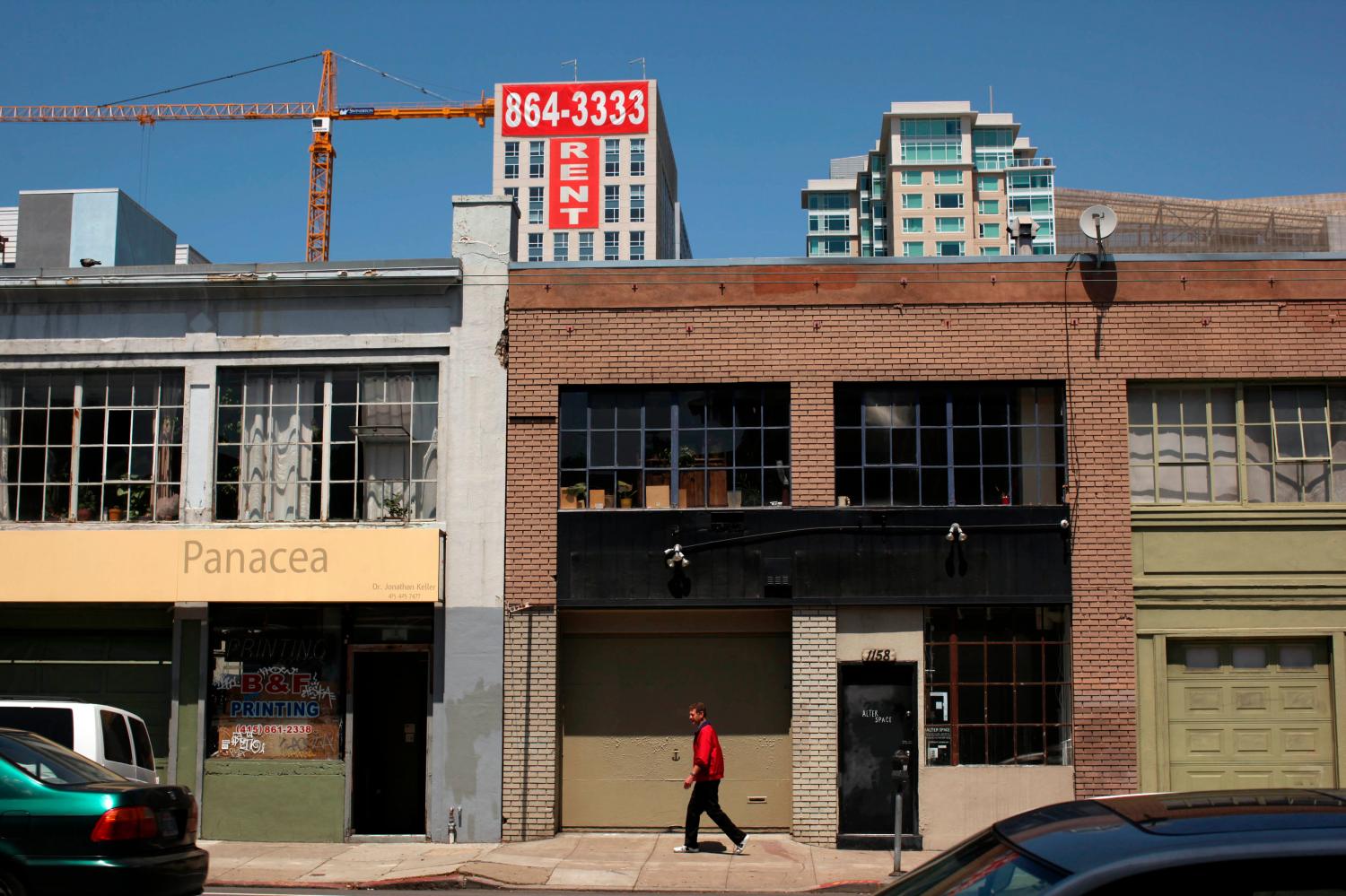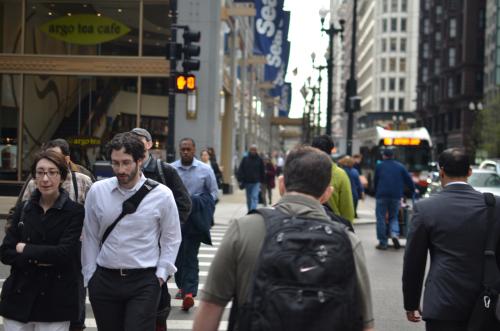I recently had the opportunity to speak to researchers, investors, and community leaders in Ohio, Northern Kentucky, and Western Pennsylvania on “People and Place-Based Policies.”
The actual title of the talk was “It’s ‘And’ Not ‘Or.’” I didn’t select that title—too many conjunctions—but it accurately reflected the need for public policies aimed at improving opportunities for under-resourced communities. And thinking on this question has evolved considerably in the last few years, as I describe briefly below.
But the title also implied that efforts aimed at assisting poor families are distinct from those aimed at assisting poor places (or more accurately, people who live in poor places). Which, when it comes to truly effective approaches, may not be the case.
The context for “people versus place” has changed
Like a lot of students of urban policy, I have learned a ton from Harvard’s Ed Glaeser over the years about how city economies work, and why.
In 2007, Glaeser wrote an article in City Journal entitled, “Can Buffalo Ever Come Back?” Its thesis reflected a pretty mainstream view among economists at the time: public policies focused on revitalizing places like Buffalo were ineffective and inefficient. Typically, authors don’t write their titles (blame the editors) but the subtitle’s answer—“Probably not, and government should stop bribing people to stay there”—made pretty clear the author’s view.
A couple of things have happened since then, however, that I think noticeably shifted the conversation.
The first is the work of another Harvard professor, Raj Chetty, and his colleagues. Their 2015 research helped upend how researchers and policymakers thought about the results of the Moving to Opportunity program. Between that and their earlier work demonstrating tremendous variation in rates of upward mobility for low-income kids around the country, they challenged the trope we’ve heard from time to time in anti-poverty seminars that “place doesn’t really matter.”
The second event was the 2016 election, specifically the electoral shift from the 2012 results in the states of the Upper Midwest. That shift, in turn, focused a great deal of attention on the declining fortunes of many small- and midsized communities that ultimately swung the Electoral College.
So economically and politically, there’s an increasing recognition and acceptance that places really do matter.
Economically and politically, there’s an increasing recognition and acceptance that places really do matter.
Flash forward to 2018, and Ed Glaeser argued in a report for Brookings (with Larry Summers and Benjamin Austin) that government should subsidize jobs in communities with low employment rates. While it’s possible that view reconciles with his earlier writing on Buffalo, it nonetheless seems a far cry from suggesting that the best policy for residents of distressed communities is to help them leave—what Jason Segedy calls the “U-Haul School of Urban Policy.”
Longer-term trends reaffirm the importance of place
Of course, those shorter-term contextual shifts came against the backdrop of longer-run trends that point toward the importance of place in shaping outcomes for people.
The first trend is growing regional disparities. As my Brookings colleague Mark Muro has shown, the most successful metropolitan areas are pulling away from the rest of the pack on jobs and wages, particularly since 2000. This partly reflects the “winner-take-all” nature of the tech sector. It also reflects increasing returns to size in a knowledge economy, in which very large metro areas—those with at least a million people—are putting more distance between themselves, and smaller and more remote regions.
The second trend is the persistence of poverty, at both the city and neighborhood scales. That’s readily apparent in the cities of Ohio, Northern Kentucky, and Western Pennsylvania. Of 11 major cities in the region, 10 have poverty rates today that are higher than in 1990 and higher than the national average (Pittsburgh is the lone exception). This reflects in part the significant decline of manufacturing jobs in and around these cities over the past 25 years.
Concentrated poverty persists at the neighborhood level as well. Compared to 2000, far fewer Americans in poverty today live in low-poverty neighborhoods. Far more live in neighborhoods where at least 20%, 30%, or even 40% of residents also live in poverty. In these ways, certain places continue to multiply the impacts of economic disadvantage that families face.

A third related trend is continued high levels of racial segregation in many U.S. metropolitan areas, particularly those in the Midwest. As my colleague Bill Frey’s research shows, black-white segregation continues to trend downward, but remains extremely high in metro areas around the Great Lakes.
This has far-reaching consequences for black communities. Not only does it separate them from employment and educational opportunities, but it also limits their chances to build wealth. Another Brookings colleague of mine, Andre Perry, has shown that homes of equivalent quality, in neighborhoods of equivalent quality, are valued at 23% less in black-majority communities than in non-black communities. This, in turn, becomes a significant place-based constraint on residents’ chances to invest in starting a business, sending a kid to college, or improving their home.
Policies take three related approaches
For those of us who think about or work on helping people through helping places, a renewed realization that place matters is welcome. Because frankly, it always has.
This shouldn’t obscure, of course, the critical role that people-based policies play in supporting the well-being of lower-income Americans, including those who live in low- and moderate-income communities. Such policies are characterized by their investment in the needs and capacities of lower-income people, regardless of where they live. From tax credits for low-income workers and families like the EITC, to nutritional benefits like SNAP and WIC, to subsidized health insurance through Medicaid and the ACA exchanges, the vast majority of financial support that government provides to low-income Americans comes through people-based programs. And because they naturally concentrate resources in places where eligible people live, they’re an economic boon to lower-income areas as well.
Place-based policies, by contrast, can be defined as those that invest in the assets and attributes of lower-income places, without specific regard to whether the people who benefit from those investments necessarily have low incomes. These might include policies that:
- Connect lower-income communities to improved transportation options, as Indianapolis and other cities are doing with Bus Rapid Transit;
- Subsidize the renovation of commercial and residential properties in formerly distressed communities like Cincinnati’s Over-the-Rhine neighborhood; or
- Invest directly in commercial enterprises in lower-income areas through new tools like Opportunity Zones.
All of these approaches arguably aim to expand opportunities for people in economically disadvantaged communities, by investing in the physical assets of those places.
There is a third hybrid category, which I’d shorthand as “people-place strategies.” Like people-based policies, these strategies invest in human needs and assets, but do so through the lens of specific neighborhoods in order to maximize the impact and coordination of those investments. Examples of these strategies might include:
- Title I funding for schools serving high-poverty student populations;
- Programs that subsidize lead-based paint remediation in low-income neighborhoods to improve childhood health and educational outcomes;
- Anchor strategies that engage colleges and hospitals in surrounding low-income communities to increase opportunities for local workers and business owners; or
- Comprehensive community development approaches that blend the affordable housing development with construction of new schools and recreational opportunities for children, along the lines of the Purpose Built Communities model.
To me, these people-place strategies best represent modern thinking about how to overcome disadvantage. Because while they acknowledge that place indeed matters, they also invest in the human capacities that ultimately determine well-being at any geographic scale.
Four barriers to investing in people through places
If these people-place strategies are so valuable, why aren’t they more the norm? Why do purely place-based approaches often win out in the public policy marketplace? I see four primary obstacles.
The first is simply about time. Sure, it can take a good long while to put an affordable housing deal together. But once shovels are in the ground, within a matter of months, you can provide visible, tangible value to a neighborhood and to the families living in those units. A new workforce training center, on the other hand, can take much longer to deliver visible results in a community. There are a lot more variables in play, between the quality of the training, the condition of the local labor market, and the circumstances trainees are grappling with.
A second obstacle has to do with financing, and the institutional models we’ve developed to support place-based versus people-place strategies. Between the Low Income Housing Tax Credit, New Markets, and now Opportunity Funds, we have developed a range of sophisticated financing vehicles to leverage private investment in affordable housing and commercial enterprise in low-income communities. Community development institutions, meanwhile, have evolved over time to meet their own bottom lines by facilitating use of those vehicles.
Compare that to, say, the burgeoning movement in many struggling cities to provide promise scholarships, which are effectively financial guarantees for postsecondary education. It’s much tougher to monetize the gains from those programs to attract private investment. Many thus rely on the noblesse oblige of local companies or wealthy individuals, as well as traditional public-sector outlays.
A third challenge is permanence. If Denver lays down light rail tracks in the Five Points neighborhood, it’s a good bet that those tracks will be there in another 5, 10, or 20 years. Whatever economic benefit that investment generates, some portion will still accrue to that surrounding area.
But if Denver invests in a family in that same lower-income community, it has no certainty that investment will remain in the neighborhood, or even in the wider city. People move. They may be especially likely to move out of low-income neighborhoods as those investments pay off, and their individual economic situation improves.
Finally, there’s a question of values. We should ask ourselves, and ask of the leaders in our communities, whether we and they truly believe that people in lower-income communities—as opposed to only the place itself—are worth investing in. Suffice it to say, the answer to this question is bound up in complicated issues of race, class, and the history of our cities.
It’s great that we are moving beyond tired notions that place doesn’t matter, or that we should choose between people and places as targets for investment, to promote economic mobility. But delivering meaningful change for low-income Americans in low-income communities may take much greater patience, creativity, and commitment to their value in our society.
Berube delivered a version of these remarks at the Cleveland Fed Policy Summit on June 20, 2019.







